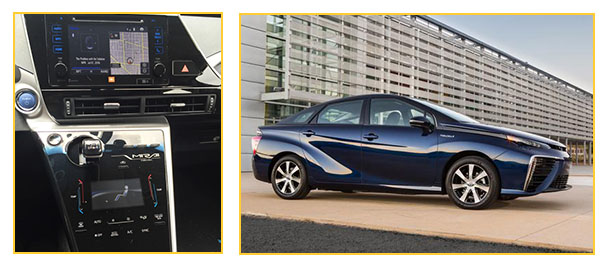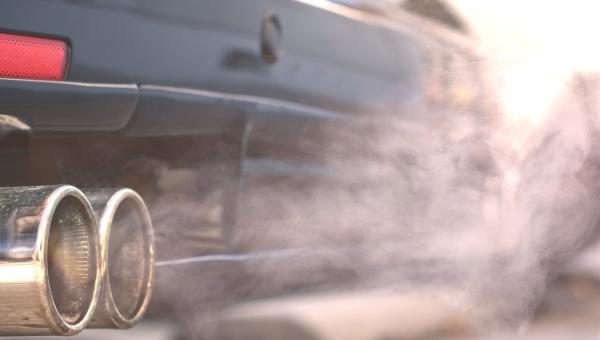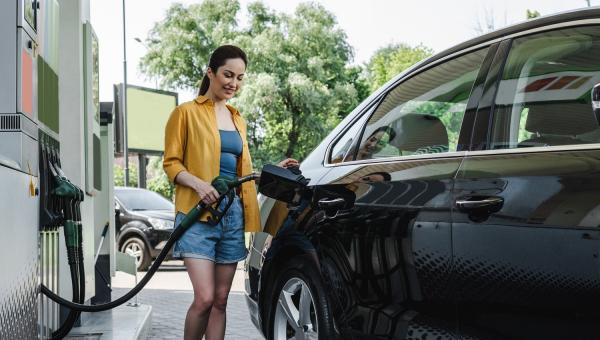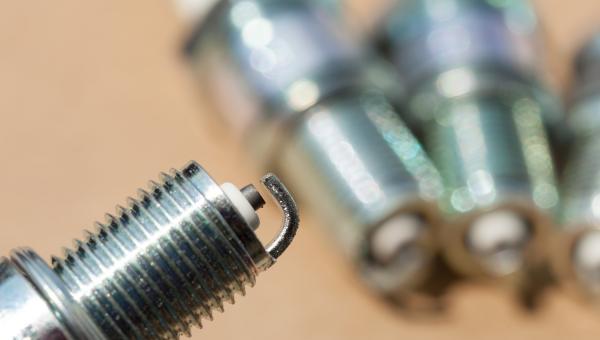Test Drive Notes Library
-
 Pros
Pros
- Nothing comes out the "exhaust pipe" except water (OK there’s no real exhaust pipe). The technology absolutely works. There’s a fuel cell up front that converts the hydrogen into electricity and water. Every once in a while, the Mirai will purge its water. So it doesn’t "make water" at an inopportune moment (like while you’re picking up your date, or in your garage), the Mirai has an H20 button that allows you to preemptively purge the water holding tank.
- You get a 250-mile range on a tankful of 5kg of hydrogen. Compared to other electric vehicles that are now just crossing the 100 mile range, you forget about range anxiety altogether when you’re driving the Mirai. At least until you get down to 50 miles left and you have to leave enough fuel to get to the one area hydrogen station that’s 20 miles away.
- Quick refueling. Unlike battery powered cars, “recharging” takes about the same amount of time as refueling a gasoline-powered car. It’s a little slower, because the pump turns on and off while pressurizing the tank. But it’s five to eight minutes, not not five to eight hours. That also means long trips are possible in certain parts of the country, with some planning.
- Wonderfully smooth power delivery.
- Solid, comfortable ride, and pretty flat cornering. Comfortable seats, luxury feel. It’s a very heavy car at 4,500 pounds, and the weight makes it feel planted. We didn’t take it on any twisties, but around town, the center of gravity felt reasonably low and the body lean at modest speeds was minimal.
- Good room for four adults, with very comfortable back seats.
- Prius-like controls inside, with more luxury.
- Full suite of modern safety features including automatic emergency braking.
- Rebates galore. Hydrogen cars have a cart and horse problem. Until there are more hydrogen fueling stations around, people won’t buy hydrogen fuel cell cars. Until more people buy hydrogen fuel cell cars, filling stations won’t add hydrogen. The solution? Incentives galore. You can get up to $8,000 from the feds, $5,000 from the state of California, and $7,500 from Toyota. That turns a $58,000 car into a $38,000 car. Or a $499 a month lease for three years. Plus Toyota will give you up to $15,000 worth of fuel over the first three years, good for about 15,000 miles a year by our calculation.
-
 Cons
Cons
- Excuse me, can you tell me where the nearest hydrogen station is? (Nope.) While the technology is great, whether you can even consider a car like the Mirai depends on how close you are to a hydrogen filling station. From what we could discover, there’s one in Massachusetts, one in Connecticut, one in South Carolina, and a couple of dozen in CA, with Los Angeles pretty well covered. More are planned for California in the next year or two, which is the key market for the Mirai right now. But Toyota says the Northeast is next for growth in hydrogen stations.
- Hydrogen Fueling Station Locations
- Fuel is pricey. At our local hydrogen station, fuel was available for $16.78/kg. The Mirai takes 5kg, and after refilling, the on-board computer predicted a range of about 250 miles. That comes out to about 33 cents a mile in fuel costs. Compare that to the slightly larger Toyota Camry, which gets 28 mpg overall. At three dollars a gallon, the Camry’s fuel cost is about 11 cents a mile. A Camry Hybrid, rated at 40 mpg, would cost you about 7.5 cents a mile. Toyota will pay for your gas for the first three years, so your cost for those first three years is zero. But after that, you’ll presumably be paying a premium.
- Large A pillars can block out pedestrians when you’re turning right in city driving.
- The small- to mid-sized Mirai weighs about 4,500 pounds. A bunch of that mass comes from the fuel cell. That weight gives it a very solid feel on the road. But you can also feel the front-heaviness on sharper corners.
- Other than that, there’s nothing to dislike about the Mirai. If you live near a hydrogen station, you could become a very happy early adopter.
Test Drive Notes Library
Get the Car Talk Newsletter
 Pros
Pros Cons
Cons


